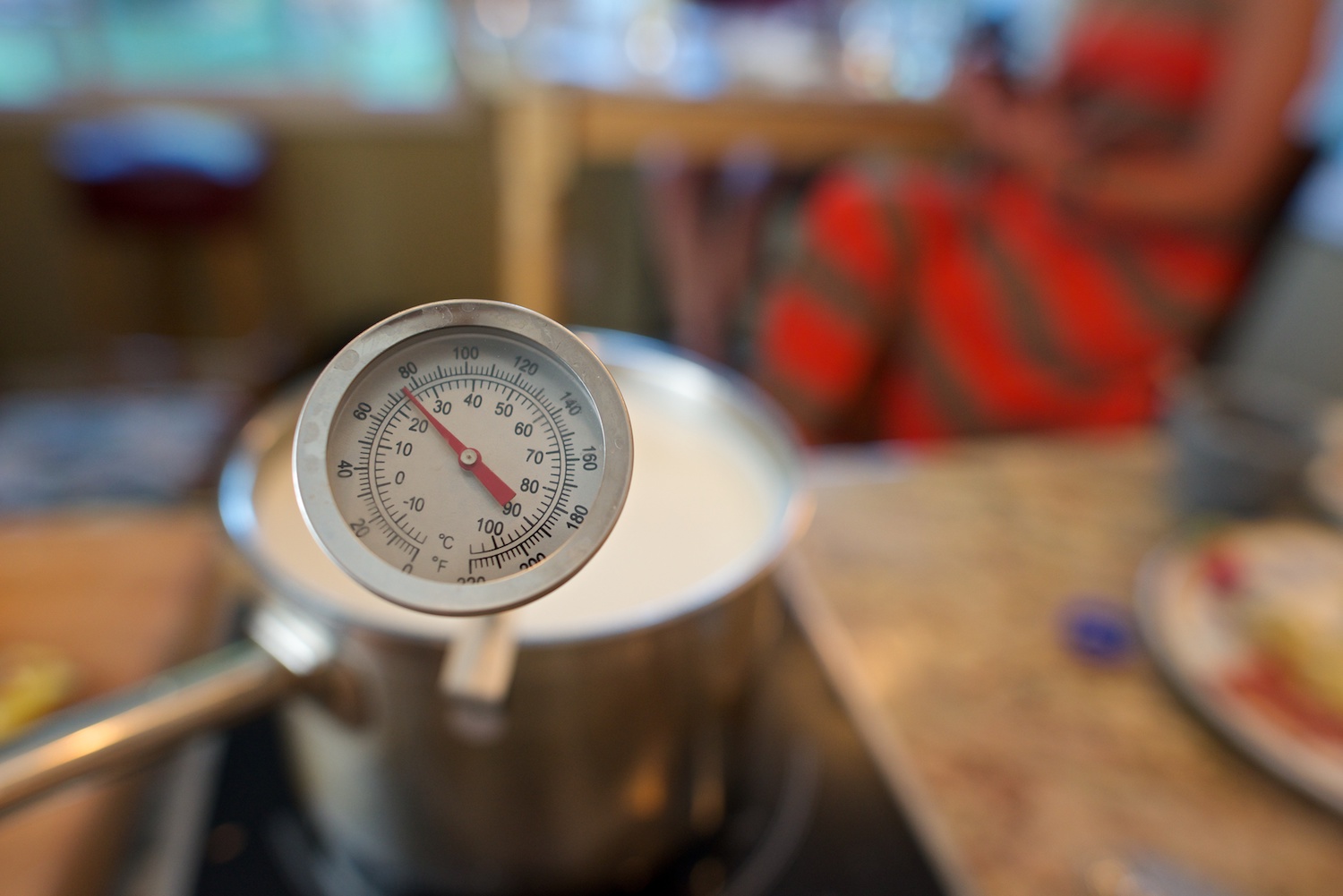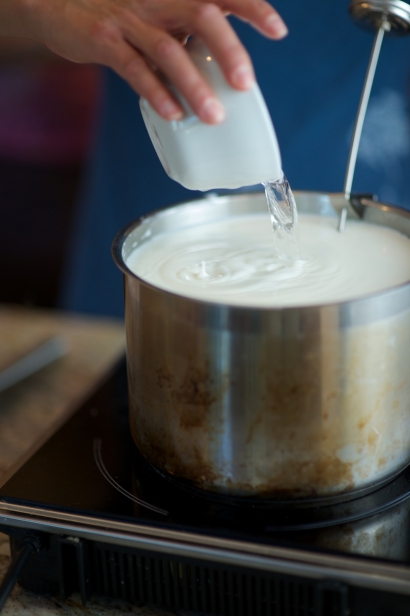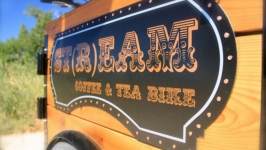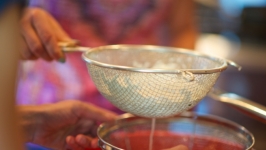Culture Club: The Making of a Cheese Group
While some friends get together to discuss the lyricism of the latest Anthony Doerr novel or get worked up over a new political biography, my girlfriends and I meet regularly, not over books, but over steaming pots of milk and instant-read thermometers. We’ve got a cheesemaking club. It may be messier than your average book club, but there’s just as much wine.
Sarah Goldstein led the charge armed with her beautiful copy of Artisan Cheese Making at Home: Techniques & Recipes for Mastering World-Class Cheeses by Mary Karlin and Ed Anderson. This book will inspire anyone to want to make cheese and, with recipes organized from easiest to hardest, the book is an easy way to get started and great for all skill levels.
In our group, Kristel Grisel brings attention to detail and precision while Patti Bernhardt, who happens to live across the alley in this leafy downtown Boise neighborhood, shares her vast inventory of kitchen tools. I knew that Bernhardt was going to be a shoo-in for any foodie group when I found out that she had an arsenal of enviable kitchen gear including a sous-vide machine, pressure cooker and turbo-charged kitchen torch—all of which she is generously willing to share.
For me, a cheesemaking night started as a justification to get together with friends. The fact that I get to learn something new while creating something delicious is just an added bonus.
This posse of gals—with our busy schedules, careers and children—has for the last year and a half or so tried to carve out an evening every few weeks to delve further into the world of fromage. The thought of making cheese, with all its rennets and cultures and “mold powders,” has always seemed more like a science experiment than cooking. It was overwhelmingly intimidating. To test the waters and build some confidence we started slow, with ricotta—or as I now call it, “cheese making lite.” With an ingredient list of just milk, buttermilk and salt, it was easy to understand and provided almost instant gratification.
With a success under our belts we graduated to mozzarella and found a recipe promising results in only 30 minutes. We read and reread the recipe a dozen times as things were getting a little trickier now with the addition of “science-y things” like rennet and citric acid. We huddled over the pot, anxiously watching the thermometer, waiting for the first curds to form. We put on thick rubber gloves to knead and pull the piping hot cheese like taffy. And you can bet we celebrated our success by eating every last bit of it on toasted bread that very evening.
Maybe this is where we started getting cocky because chévre—the soft spreadable goat cheese—while seemingly easy enough, continued to elude us. At least twice we had botched batches leading to the double disappointment of not having any cheese to enjoy and getting to watch big pots of expensive milk go down the drain. We finally mastered it though, and then moved on to burrata, which we made twice because it was just that good.
Like a book club that has graduated from romance novels to Proust, we’ve graduated to things like mesophilic starter cultures and have begun a collection of molds (as in forms, not fungus) to make cabécou, or “little goat” in French. It’s also an experiment in patience as there are various steps to take every couple days for the first week, and then the cheese needs to age for at least a week longer. This marinated version is easily tailored to individual tastes with our seasoning combinations, which include: preserved lemons and lavender; sun-dried tomatoes and capers; fresh basil and garlic scapes; and green olives and roasted red peppers. All are soaked in olive oil, yielding a tasty by-product to boot.
So I guess in a way this is a book club, it’s just based around one book. Sure, we’ve been at this for more than a year and are still in the beginner section, but all that means is many more tasty nights of wine, friends and experimenting.
Artisan Cheese Making at Home: Techniques & Recipes for Mastering World-Class Cheeses









